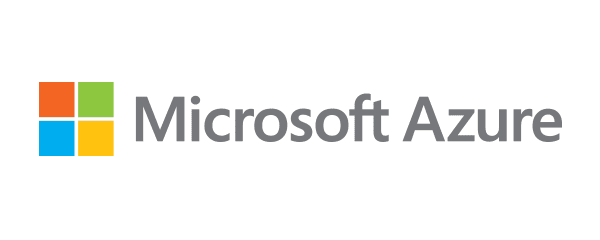The power of 5G, IoT, and real-time AI will unlock new and innovative services for enterprises across the world to accelerate their transformation toward Industry 4.0 as they evolve and adopt diverse new business models. The partnerships created by operators, managed solution providers (MSPs), and cloud solution providers (CSPs) will be at the center of this transformation.
More Info: AZ-303: Microsoft Azure Architect Technologies
Nine months ago, we unveiled our Azure for Operators initiative to help operators and enterprises maximize Industry 4.0 opportunities. Today, we’re introducing Azure private multi-access edge compute (MEC), new services to accelerate 5G and edge monetization, and a new partner initiative to empower operators, system operators (SI), and ISVs to develop Microsoft-validated Azure private MEC customer solutions.
Growth is on the horizon for the MEC market
The MEC market is expected to grow exponentially within the next few years. 5G, IoT, MEC, and real-time AI will unlock scenarios to help businesses drive their competitive edge, with operators and CSPs positioned at the core of this transformation. CSPs and systems integrators are looking to simplify the deployment of edge platforms and network functions, and to deliver applications that will be powered by low-latency wireless solutions.
Microsoft continues to be the cloud hosting provider of choice, enabling mobile operators to capitalize on 5G and edge opportunities. According to Nick Mcquire, Chief of Enterprise Research at CCS Insight, our recent acquisitions of Metaswitch and Affirmed Networks “represent a significant expansion of Microsoft’s hybrid cloud strategy and are one of the biggest statements yet by a hyperscale cloud provider on the opportunities for transformation in 5G and the telecom operator arenas.” Today’s announcements underscore this sentiment.
In the current 5G era, operators are looking to the enterprise to fuel revenue growth. Microsoft understands that enterprises see the edge and private wireless as key to success, but there are challenges. For example, enterprises have edge assets, such as critical infrastructure in remote locations, but may have difficulties onboarding network connectivity and applications to extend the value of those assets. Our goal is to perform this service with minimal disruption to existing business models, with the flexibility required to meet each operator along their unique journey.
Introducing Azure private multi-access edge compute (MEC)
Azure private MEC enables operators and systems integrators to simplify the consumption of secure and private 5G networks and to easily deliver ultra-low-latency networking, applications, and services at the enterprise edge.
As an evolution of Private Edge Zones, Azure private MEC expands the scope of possibilities from a single platform and service to a combination of edge compute, multi-access networking stacks, and the application services that run together at the far edge. These capabilities help simplify integration complexity and securely manage services from the cloud for high-performance networking and applications. Azure private MEC is also deployable in space- and power-constrained scenarios in a performant, scalable manner starting with (and incrementing in) 1U form factor server.

An ecosystem to enable operators, SIs, and ISVs to unlock enterprise opportunities
Network-aware applications drive business value for these new private networks, and edge AI drives most use cases beyond simple connectivity. We are simplifying this application development with Azure developer tools and partners, and low-code or no-code programming environments. Once established, enterprises can work within a single dashboard view, for both on-premises and cloud-based deployments, streamlining management of operations.
Enterprises understand that it requires multiple partners to enable edge computing. The Azure private MEC ecosystem represents Microsoft’s ongoing commitment to operators, SIs, and ISVs.
Operators and systems integrators will realize the value of Azure private MEC in three ways:
◉ Accelerate their time-to-market with customers and reduce their investment in integrating various network and compute scenarios.
◉ Leverage existing Azure capabilities to extend reach to customer premises—regardless of a hardware platform—using a consistent Azure experience.
◉ Use Azure private MEC to gain access to a validated set of application ISVs who can create and deliver customer solutions.
Today, we are seeing and hearing about Industry 4.0 opportunities in these areas, where this highly reliable and ultra-low latency communication requires a degree of computing and connectivity at the edge:
◉ Manufacturing. Real-time automation (for example, the automotive industry driving increased productivity). Command and control of robots, quality control, and remote updates.
◉ Smart spaces. Actionable insights for data-driven actions in places where digital kiosks and signage are connected to real-time events and information (for example, airports or stadiums).
◉ Energy (oil and gas). Better access to global services and coverage available to customers and improved customer experiences.
◉ Healthcare. Real-time analytics to enable more efficient patient monitoring and video analytics for behavioral recognition to improve facility safety.
◉ Transportation. Improved efficiencies for airplane turnaround times and passenger counts, and greater insights to manage large parking lots.
◉ Public safety and health. Near real-time data capabilities foster greater transportation safety, improve passenger flow, and create more efficient and safer parking in commercial spaces.
◉ Retail. Improved customer experiences with quick identification of out-of-stock items, in-store customer traffic insights and journeys, and more efficient curbside pickups.
◉ Infrastructure. Early infrastructure deterioration protection and predictive maintenance, and enhanced safety of critical infrastructure.
New private MEC products and services
We are introducing new products and services in conjunction with Azure private MEC.
Azure Network Function Manager
Azure Network Function Manager is a fully managed cloud-native orchestration service that lets you deploy and provision network functions in Azure private MEC for a consistent hybrid experience. The consistency comes from using familiar tools like Azure Marketplace to pick from a curated list of pre-validated offers (to ensure proper operation at the edge), and the Azure portal to deploy network functions as managed applications. By using the Azure portal to access marketplace applications, you take advantage of managing distributed workloads across multiple sites through a single pane of glass.
Metaswitch Fusion Core
Available in the Azure Marketplace, Metaswitch Fusion Core is a fully containerized 5G Core solution that supports all network functions needed for connecting IoT devices over 4G or 5G radio networks. Using the Azure Network Function Manager, Metaswitch Fusion Core is easily deployed and provisioned from within the Azure portal and enables ISVs and operators to deploy applications, 4G and 5G network functions, O-RAN centralized and distributed units, Azure AI, machine learning, and IoT, and video analytic services on the same Azure private MEC platform. This integrated approach simplifies and speeds the deployment of solutions that meet enterprise use case scenarios.
Affirmed Private Network Service (APNS)
APNS is a fully managed and configurable private cellular network offering, enabling mobile network operators and managed service providers (MSPs) to run private LTE and 5G core networks for enterprises. Operators can now provide enterprises with a carrier-grade private network that is essential to run business-critical applications that require low-latency, high bandwidth, and end-to-end security. APNS provides a smooth transition from 4G to 5G and enables operators to scale private networks to thousands of enterprise edge sites with its automation and simplified operations capabilities. APNS is also the only operator-integrated solution to provide secure mobility across multiple enterprise sites.
Microsoft marketplace partner solutions
In addition to Metaswitch Fusion Core and APNS offerings, customers can access Azure Marketplace solutions from our growing partner ecosystem. These include Celona, ASOCS (coming soon), Netfoundry, Versa, Nuage Networks, VMWare SD-WAN by Velocloud, Fortinet (coming soon), 128 Technology (coming soon), and others to follow.
The Azure private MEC partner ecosystem
The importance of considering Azure private MEC in terms of its partner ecosystem cannot be overstated, given the drive to continue Microsoft’s partner-centric mindset. Microsoft CEO Satya Nadella recently said, “We fundamentally wouldn’t exist as a company if not for the partner ecosystem taking what we build, adding value to it and then, most importantly, jointly being as obsessed about how do the outcomes of it help the world get better one business at a time, one community at a time.”
Azure private MEC is no exception. It’s about enabling our trusted advisors—the partner community—to help meet our broader customer goals. Our partners are critical for Azure private MEC to span the ecosystem of hardware, application, and the network. This enables operators and systems integrators who are building on top of our platform to create solutions that drive new innovations and enterprise digital transformation. These include operators, managed service providers, and systems integrators who are responsible for the planning, deployment, and the operation of an Azure private MEC implementation; platform partners, who bring critical hardware and software components to the Azure private MEC ecosystem; and application ISVs, who offer ready-to-deploy solutions.

Our partners in their own words
We are thrilled about Azure private MEC, its role in helping enterprises transform their business operations, and the vast opportunities it creates for our partner ecosystem. Read and take a listen to videos of what some of our partners are saying about working with Microsoft to deliver Azure private MEC solutions that create new business value for their enterprise customers.
Operators and system integrators
We’re working with AT&T and our mutual customers in the automotive space to improve their factory operations, travel and logistics customers to make asset-tracking more accurate and cost-effective, and experimenting with opportunities to improve worker safety in heavy manufacturing scenarios through live video analytics.
“AT&T and Microsoft Azure are offering bold solutions to help transform business through the power of on-premises edge computing. By combining highly secure, reliable high-speed cellular traffic management with the power of Azure at the edge, we’re bringing the performance, high security, and privacy businesses need for businesses to innovate. The future of business technology is at the edge, and we’re delivering the tools that businesses will need to succeed.”—William Stovall, VP, Mobility and IoT, AT&T Business
“Tampnet’s ‘Connected Platform/rig’ initiative is to connect an IoT ecosystem of smart devices and sensors located on the rig or platform product to the internet. It is centered on providing our customers with the most reliable, secure, and agile connectivity to operate oil platforms and rigs in remote inaccessible locations where they face the most challenging environments. With the Microsoft/Affirmed integrated approach to private networks, we were able to provide the carrier-grade connectivity to our customers while providing simplified operations and end-to-end assurance using the cloud ecosystem.”—Frode Stoldal, Chief Digital Officer, Tampnet
“One of the most relevant challenges around 5G wireless factory is how to combine robust and reliable communications with computing capabilities. Within industrial environments, integration of both technologies is feasible due to the use of industrial edge computing technologies. We can guarantee the milliseconds of latency that use cases such as robotics, artificial intelligence algorithms (video processing, etc.), augmented reality, etc., need to interact with the real world. Microsoft Azure edge solutions allow us to simplify and increase operational efficiency to certify and integrate more partner use cases, thereby establishing a robust ecosystem of industry solutions for our clients.”—Gonzalo Martin-Villa, CEO, Telefonica TECH AI of Things
Watch to learn more about how Accenture, Cognizant, HCL, and Tech Mahindra are partnering with Microsoft to
deliver new and innovative solutions to help accelerate the digital transformation of their enterprise customers.
Network functions partners
“Industrial customers are looking for end-to-end solutions that will connect their IoT devices and production lines to their management systems as well as for analytics and machine learning tools. They also seek a platform that can support and introduce multiple relevant edge applications. Our partnership with Microsoft brings together all of the above, including packet core as a service, cloud infrastructure, and third-party applications. The Azure Stack Edge helps them simplify the deployment and management of their private 5G networks for latency-sensitive applications.”—Gilad Garon, CEO, ASOCS
“As enterprises are seeking faster time-to-market for the delivery of innovative business applications, they can now leverage our fully cloud-managed Celona private mobile network service with Azure private MEC. They can securely run real-time applications along with Celona’s network resources for private 5G on the Azure Stack Edge."—Rajeev Shah, CEO, Celona
“Technology is clearly transforming every industry, with compute migrating to the edge, AI and automation reducing the costs of running networks, and new 5G services becoming a commercial reality. We believe that open, multi-vendor 5G solutions based on a cloud-native architecture will be the catalyst for a new wave of innovation. We are partnering with Microsoft to bring innovative new private network solutions to market, leveraging Azure private MEC platform, Azure Network Function Manager, and the Affirmed and Metaswitch solutions to accelerate the growth of a variety of use cases, including Industry 4.0.”—Mark Colaluca, VP and GM, Communications and Technology Group, Hewlett Packard Enterprise
“Fujitsu’s carrier-grade 5G Open RAN solution and managed services offerings, combined with the power of cloud computing from Microsoft’s Azure private MEC, will help enterprises across any industry realize their digital transformation vision.” —Shingo Mizuno, Corporate Executive Officer, Vice Head of System Platform Business, Fujitsu Limited
“A key goal of the collaboration between Samsung and Microsoft is to drive innovation that lowers the barrier to entry for the deployment of private 5G networks in enterprises. The combination of Samsung’s virtualized 5G solutions with Azure private MEC will help enterprises and network operators with increased access to 5G and its ability to transform the way they operate.”—Alok Shah, VP Strategy and Marketing, Networks Business, Samsung Electronics America
“Now, more than ever, there is an opportunity to transform businesses by delivering a variety of edge services in concert with capabilities in the cloud. VMware is working with Microsoft to enable a seamless cloud-to-edge experience. VMware SD-WAN, delivered through our extensible SASE platform, is available today as a click and deploy experience from Azure marketplace on Azure public cloud and Azure Virtual WAN. This same experience will now be extended to Azure private MEC using Azure Network Function manager to enable more secure connectivity for ultra-low latency edge-native applications.”—Sanjay Uppal, Senior Vice President and General Manager, Service Provider and Edge Business Unit, VMware
ISV application partner
“With Azure private MEC we’re able to run Spyglass Visual Inspection’s deep learning inferencing at the edge, empowering our manufacturing customers to detect and address defects on the production line in real-time.”—Phil Morris, CEO and Co-Founder, Mariner
Source: microsoft.com























